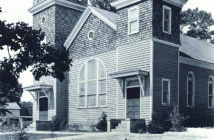 CHESTERFIELD – Although the Asian longhorned beetle (ALB) has not been found in Virginia, the Virginia Department of Agriculture and Consumer Services (VDACS) encourages residents to check for this invasive pest by looking for signs in their trees and firewood transported from other states. To minimize further spread of the beetle, VDACS advises residents who see signs of the ALB to document, capture, and report the insect to VDACS or the U.S. Department of Agriculture’s Animal and Plant Health Inspection Service (USDA APHIS).
CHESTERFIELD – Although the Asian longhorned beetle (ALB) has not been found in Virginia, the Virginia Department of Agriculture and Consumer Services (VDACS) encourages residents to check for this invasive pest by looking for signs in their trees and firewood transported from other states. To minimize further spread of the beetle, VDACS advises residents who see signs of the ALB to document, capture, and report the insect to VDACS or the U.S. Department of Agriculture’s Animal and Plant Health Inspection Service (USDA APHIS).
The ALB has the potential to destroy millions of acres of America’s treasured hardwoods, including maple, birch, elm, willow, ash, and poplar trees.
The beetle is slow to spread on its own during the early stages of an infestation, so early detection and reporting is critical to containing it. People can also help by not moving firewood, which can transport the beetle hidden beneath the bark, to new areas.
The ALB has distinctive markings that are easy to recognize:
- Long antennae with black and white bands, longer than the insect’s body.
- A shiny, jet black body, about 1 to 1 ½ inches long, with white spots.
- Six legs with possible bluish-colored feet.
Signs of ALB infestation include:
- Perfectly round exit holes, about the size of a dime or smaller, in tree trunks and branches.
- Shallow oval or round scars in the bark, where the adult beetle has chewed an egg site.
- Sawdust-like material, called frass, on the ground around the tree or in the ALB exit holes found in the tree trunk and branches.
- Dead branches or limbs falling from an otherwise healthy-looking tree.
What to do if you see signs of the ALB:
- Make note of what you found, where you saw it and take a photo, if possible.
- Also, try to capture the insect. Place it in a container and freeze it. Doing so will preserve it for easy identification by the USDA.
- To report a potential ALB infestation, contact VDACS at 804-786-3515 or USDA at 866-702-9938 or complete USDA’s online form.
For more information, visit www.asianlonghornedbeetle.com and www.hungrypests.com or contact VDACS at 804-786-3515 or your local Extension Service office.
The Asian longhorned beetle, an invasive insect from overseas, has no natural enemies here. Since its discovery in the U.S. in 1996, it has led to the loss of more than 160,000 trees in forests, parks, and neighborhoods. Once infested, trees will die and need to be removed.

